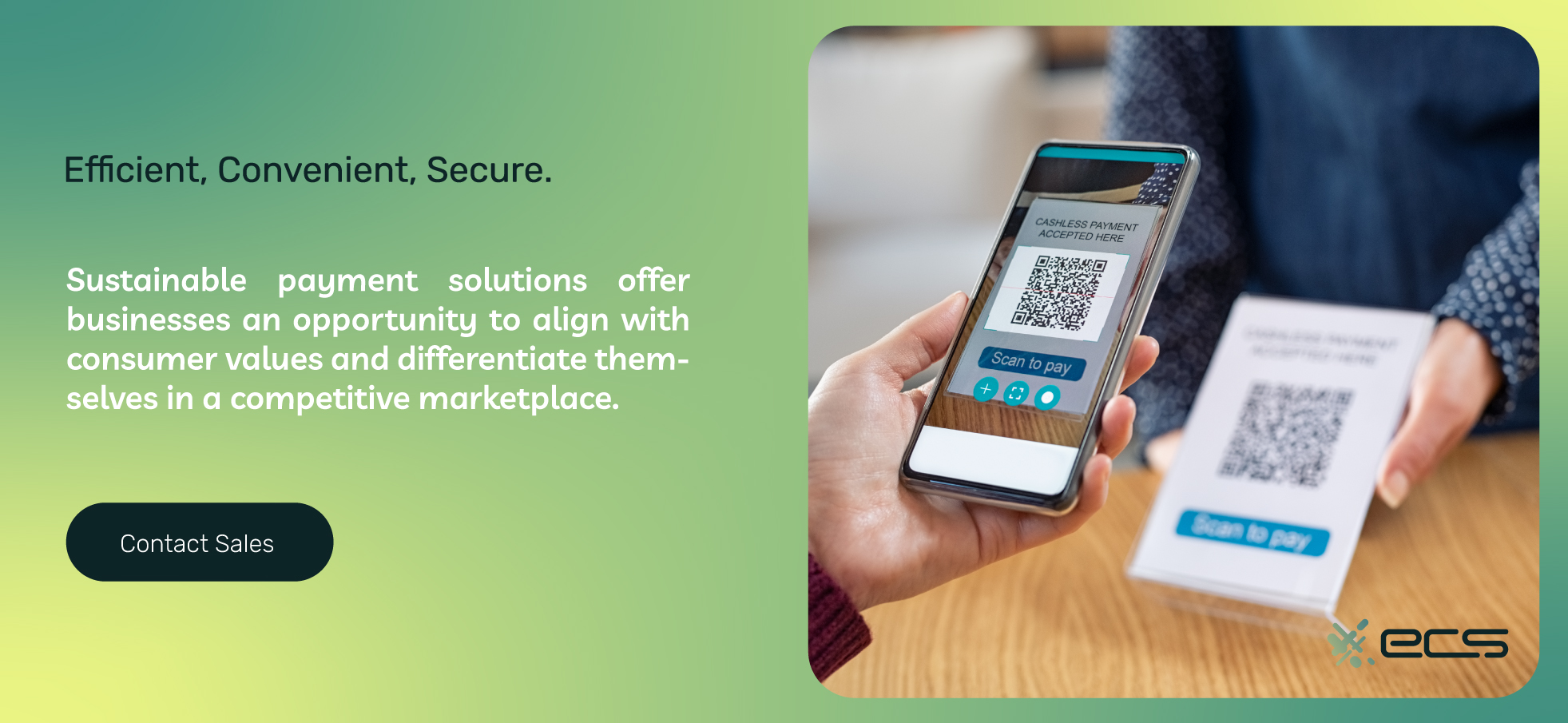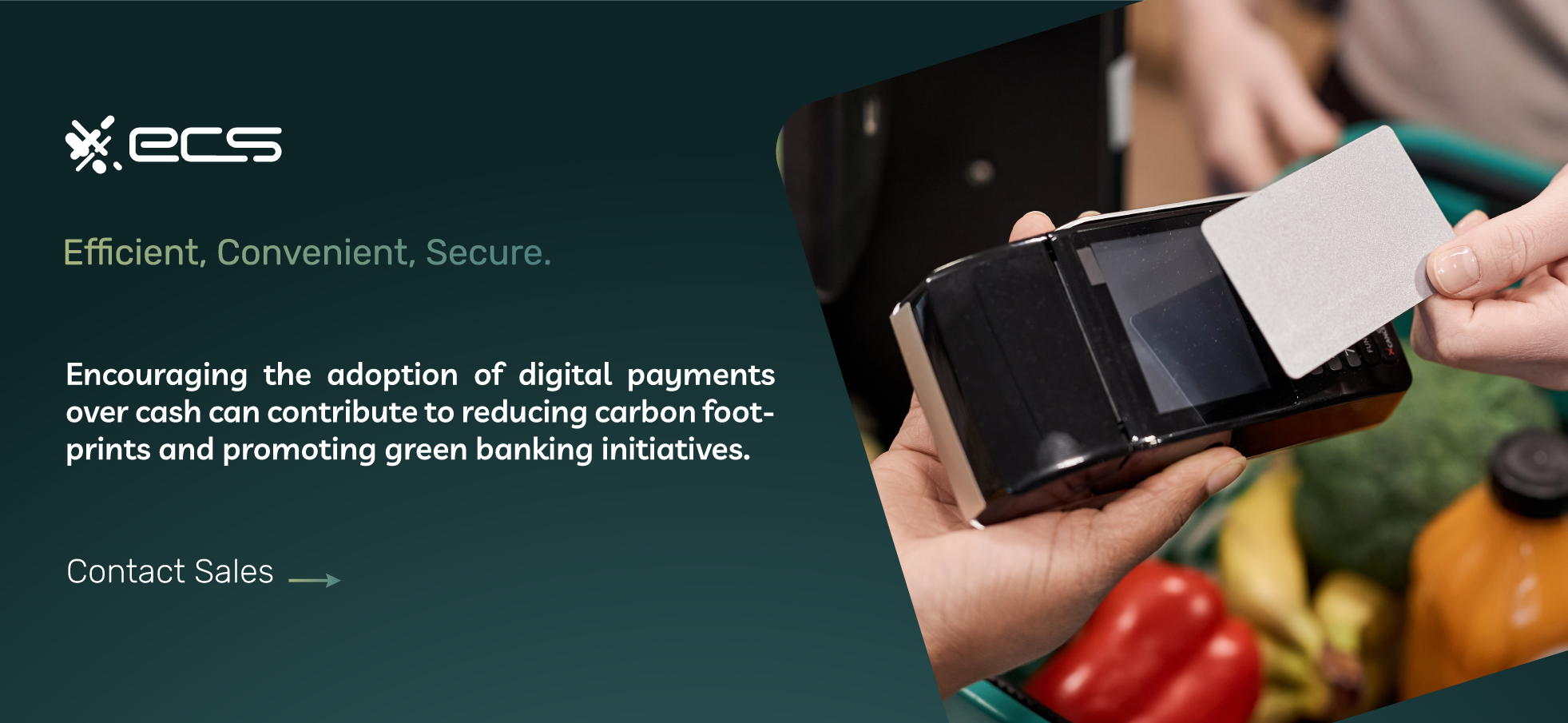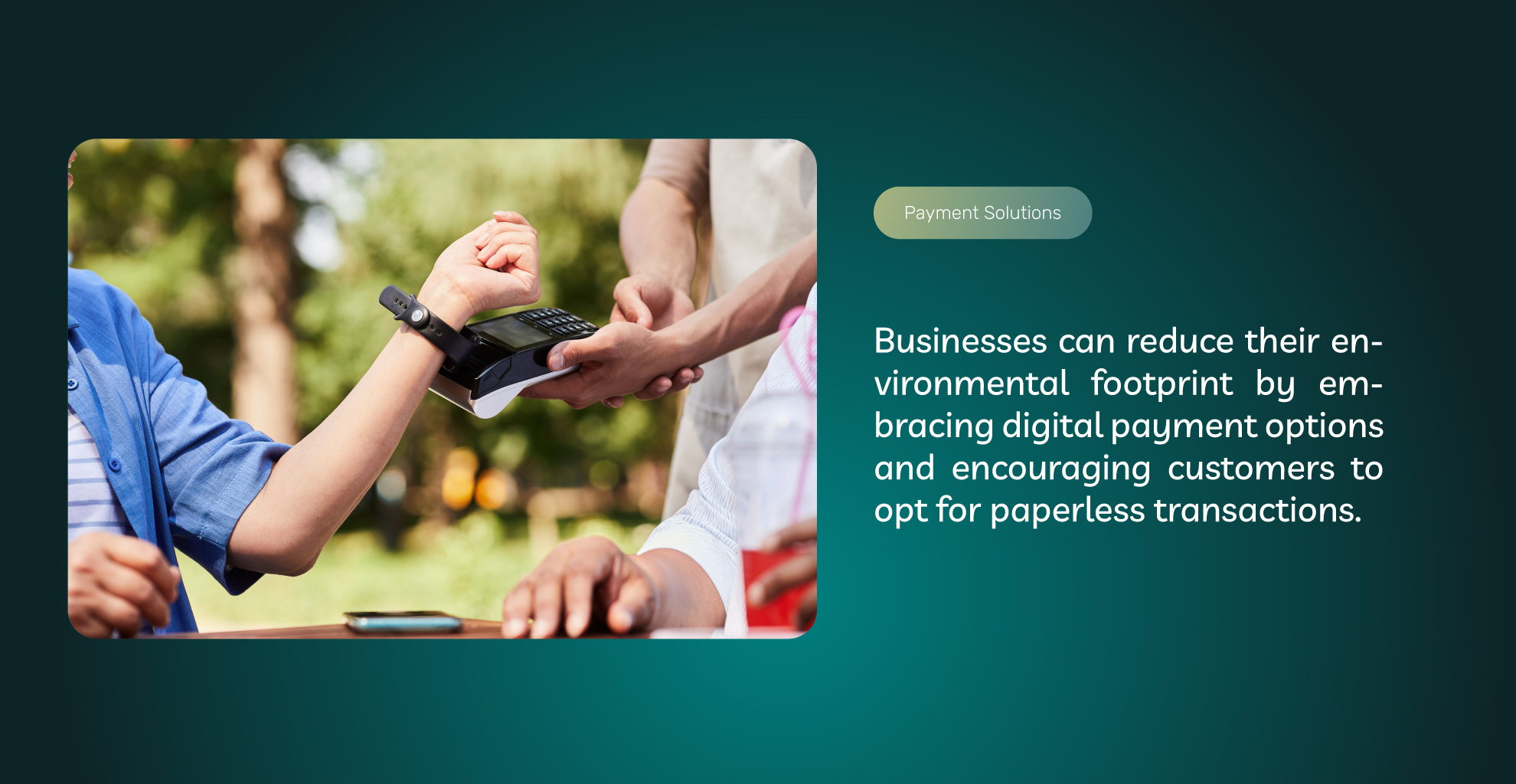Sustainability is a word that makes us think of electric cows, bamboo sheets, and windmills. Does any of that have to do with taking credit card payments? And does any of that environmental stuff even matter regarding the old cash register?
Do Customers Care About a Sustainable Future?
78% of consumers care about their impact on the environment, and 55% are willing to pay more for “environmentally sustainable” products or services. 62% of polled consumers “often or always” seek out sustainable businesses, and 84% said that business models ignoring climate action or squandering natural resources would make them want to alienate themselves from a brand.
It seems that consumers are interested in protecting the environment, whatever that may actually mean. Supply chains are more complex than ever, drawing on raw materials from a world-wide web (not the Internet) of delicate, lacework logistical networks. The sad truth is that many ethical and environmental violations are probably occurring within supply chains.

Consumers Want to Do The Right Thing
Consumers would at least like to believe that they are making ethical choices. They are intrigued by using renewable energy sources and recycled materials. Many cities and states within the United States have “sustainable development goals” to reduce waste or go carbon neutral within the next decade.
We don’t intend to examine these ideas under a polarizing lens of security. For instance, producing electric vehicles may seem to reduce consumer use of fossil fuels but also may involve gross human rights violations in lithium extraction for batteries. Let’s leave all that for pieces of investigative journalism. Our point is merely that, yes, customers do indeed care about sustainable business practices.
What Does “Climate Change And Payments” Even Mean?
It’s easy to see processes that inherently use up natural resources as “unsustainable.” But what do sustainable payment solutions imply? Is there any environmental impact when using a credit card to make a payment? Actually, yes.
Consulting firm Edgar, Dunn, & Company (EDG) estimated that 26 billion plastic cards were in consumer circulation as of two years ago. The 5 grams of PVC used to make up one card totals 130,000 tons, which is ten times the mass of the Eiffel Tower. Cards last 3-5 years before they expire and take hundreds of years to decompose.
Each card creates about 150 grams of CO2 emissions, creating 1 million tons of “greenhouse gas emissions.” In addition to these GHG emissions, processing payments created another 3.3 million tons of GHG, for a total of 4.3 million tons. This is greater than the GHG emissions of many countries. However, EDG specifically cited the African country of Togo—which many readers may confuse with a midmarket sandwich retailer of the same name.
In addition to the gross plastic tonnage of cards in circulation, these cards contain hazardous materials. You may not notice the effect of these materials while handling the cards. Still, as they decompose, the resins, films, metals, and plastics that make up the cards leak into the environment, contaminating food chains.
Biodegradable Payment Cards?
Card manufacturers are turning to alternative materials to make cards, such as recycled plastics, corn starch, wood, coffee grounds, and paper. Financial institutions like Deutsche Bank and Mastercard have launched sustainable development goals (SDGs) around card production.
Mastercard, for instance, acknowledges that most cards cannot be recycled, primarily because of the embedded components like chips and radio antennas (for NFC payments). However, all new Mastercards will be made of sustainable materials by 2028. Additionally, Mastercard launched a Digital First Card program where consumers can opt out of a card entirely, accepting a digital version only for their mobile wallet applications, enhancing sustainability in eCommerce and for any business that accepts digital wallet payments.
Since 2018, Mastercard has also invested significant resources through its DigiSec Lab in London to scrutinize the makeup of cards and map out the best way to recycle them. They are leading the way, at the vanguard of 148 financial institutions, to develop cards made from recycled ocean plastics, corn, and even sugar (you read that right).
Here’s a thought: why not surpass the eco-conscious consumer trend of using recycled material for cards and go right to no cards at all? An increasing number of consumers use digital wallets to make everyday purchases. In fact, digital wallets are the fastest-growing form of payment. 48% of consumers used digital wallets in the first quarter of 2024, up 12 points from the entirety of 2023.
Creating Eco-Friendly Payment Systems
What about the payment terminals themselves? Is there any way to affect carbon footprint reduction at the point of sale? Indeed, there is. For starters, the terminals themselves can begin a process of downsizing, as magnetic strips will disappear entirely from credit cards by 2035.
Payments will shift entirely to contactless payments or EMV chip insertions. The amount of hardware needed for future terminals will decrease, reducing the amount of raw materials and energy usage needed for their production.
Another innovation is the advent of cloud-based software. As more and more data is migrated into large data clouds, businesses need less and less hardware to animate their back-end and front-end processes.
Yet another way to reduce the environmental impact of payments is to make the casing for the POS terminal out of recycled products. Just like the cards themselves, the casing can be made out of (for instance) ocean plastics. Getnet Brazil will roll out 150,000 POS terminals made in part from recycled components of previous POS terminals; 80,000 units are already in use.


No More Paper: Electronic Receipts
One of the most obvious aspects of a “zero waste” payment option is to go paperless. Instead of handing customers a paper receipt, you can let them opt into having a receipt emailed or texted to their phone number. Whether or not you are legally required to offer customers a paper receipt depends on your state.
Some estimates suggest that US consumers may generate 180,000 tons of paper receipts annually, while others place that number at 285,000 tons. How many Eiffel Towers would that equate to? Receipts also have other sustainability concerns: around 80% of the ink used by big-name retailers on receipts contains traces of toxic materials like bisphenol A and BPA.
Paperless Transactions and Consumer Perception
What do consumers currently think of paper receipts? The answer varied by age group. Among consumers aged 55+, around 50% still want paper receipts, and only 10% want digital receipts. However, at the opposite end of the age spectrum, the gap narrows among consumers aged 16-24: over 30% prefer paper, and nearly 20% prefer digital.
What were the biggest reasons polled consumers cited for opting into digital receipts? Reasons included: I’m trying to avoid contact with toxic materials (13.79%), I feel more socially responsible (31.03%), they don’t fade over time (34.48%), I know I won’t lose them (63.79%), they’re easier to store (69.54%), and they are better for the environment (70.11%).
In other words, the biggest reason consumers prefer paperless transactions is that they perceive them as more sustainable. They might be right: some estimates suggest that paper receipts in the US alone consume over 3 million trees and more than 9 billion gallons of water, while making 300 pounds of waste and emitting gases equivalent to 400,000 cars.
What Are ESG Scores?
ESG stands for Environmental, Social, and Governance. It’s a barometer of a company’s commitment to sustainability and ethical social considerations, both in terms of impact outside the company and within the company (e.g., how employees are treated).
Many financial services companies are interested in increasing their ESG scores. For instance, VISA donated $15 million to support emergency relief organizations during the COVID-19 pandemic, including $4 million to the Red Cross.
Should ESG scores matter to your business? It’s somewhat of a moot point. If you’re taking credit card payments, you’ll need to take all of them. Some banks have better scores than others, but most are dedicated to improving their ESG scores anyway.
Returning to Visa, they are at the forefront of helping underserved communities worldwide become banked and educated about finances, making them a leader in corporate social responsibility (CSR) in the payment industry.
Their Practical Money Skills Program has been launched in 40 countries since 1991, teaching millions of impoverished individuals how to manage money, improve their quality of life, and run a business.
This type of sustainability does not directly relate to the ecological environment but rather to the human environment. Sustainability is found in the fact that such initiatives bridge wealth gaps and facilitate the emergence of certain communities into the wider world of commerce. It’s a form of “human sustainability” that is also of interest to customers.
Is Cash a Clean Way To Pay?
Some consulting firms claim that cash transactions contribute 4.6 grams of CO2 to the environment versus 3.8 grams of CO2 for card transactions. They point to currency production (32%), ATM operations, and transport (those last two comprising 64% of the issue).
What you do with this information is up to you. If you think customers want to know that card payments (over cash) can reduce their carbon footprint, let them know with signage. This sends a message to your customers that you actually care about green banking initiatives.
However, relying exclusively on green payment technologies may be risky. Some customers will still want to use cash, either for convenience, out of principle, or because they are unbanked. Digital payment sustainability is not going to be of interest to these customers.
Encouraging the energy-efficient processing of card payments over cash will have benefits for you, though. For starters, it will be easier to keep track of your cash flow. The digitized checkout process will yield another aspect of green tech in fintech.

Analytics and Integrations
Payments made at a terminal can be categorized and studied algorithmically. This allows machine learning programs to pick up on patterns and report to you. These patterns, in turn, can yield further sustainability in commerce.
The insights gleaned from the payment terminal can help you map out more efficient logistical patterns. In some industries, the waste reduction is more readily evident. In food-related businesses, for example, analytics could cut down on millions of pounds of waste per year.
Other businesses can also benefit. Supply chains are still driven by fossil fuels. Establishing more efficient patterns of supply will cut down on transportation expenses and the impact of transporting goods on the environment.
Another area in which digital transactions reduce energy use is integrations. Integrations involve connecting one type of software to another, reducing the need for manually moving data. For instance, payment processing software can be linked to inventory and accounting software.
The end result is a reduction in overhead like wages and utilities (e.g., keeping the lights on while burning the proverbial midnight oil to reconcile the books). That will save you money, of course. But the simplification and automation of back-end processes could also significantly reduce your business’s impact on the environment.
Sustainability in Payments: Wrap Up
There are some exciting innovations in the payment landscape related to sustainability. Some of these innovations are driven by consumer preference for businesses that operate on ethical, community-centered principles.
How can you implement some of these changes in your own business? One of the easiest ones to implement is the idea of going paperless and encouraging contactless mobile payments. Trends clearly indicate that younger generations of consumers don’t mind getting digital receipts, and prefer to pay with their mobile wallets.
Some of the other innovations, such as cards made from recycled materials, are interesting but outside the scope of your purview. However, you can still ask your payment processor about the environmental certifications they possess and/or community initiatives they endorse.
Leasing equipment from your payment processor can also help. They may be better equipped to dispose of old POS terminals and perhaps even recycle the components than you are. If you have any questions about “green” practices in the payment landscape, we’d be happy to chat. Reachout to us through our contact form.
Frequently Asked Questions About Sustainable Payments
A sustainable payment is an eco-friendly and environmentally sound payment solution that aims to reduce the negative impact of payment methods on the environment. Most card payments are far more unsustainable than most would assume. However, digital wallets may be an answer to this in the near future.
Yes. An estimated 78% of consumers care about their impact on the environment, 55% are willing to pay more for sustainable products or services, 62% seek out sustainable businesses, and 84% said that businesses that ignore their impact on the climate make them want to alienate themselves from a brand.
The production of a single credit card generates about 150 grams of CO2 emissions. An estimated 26 billion plastic cards are in current circulation, totaling 130,000 tons of PVC. Additionally, processing these payments creates millions of tons of greenhouse gas emissions.
Businesses can make their payment systems more sustainable by adopting eco-friendly systems, such as implementing digital wallets and mobile payment solutions, which reduce the need for physical cards.
